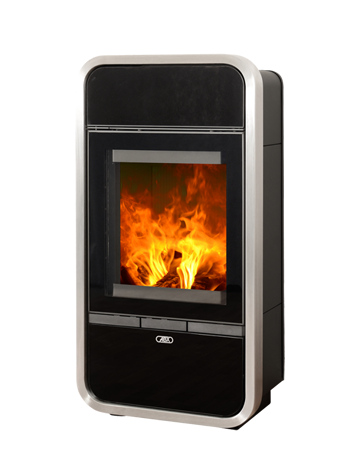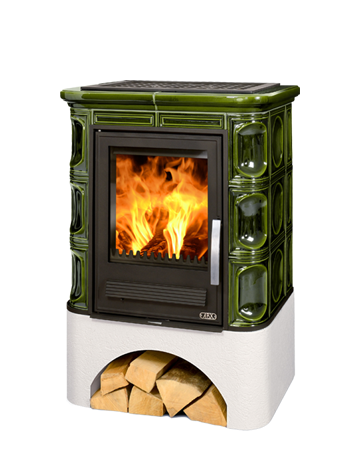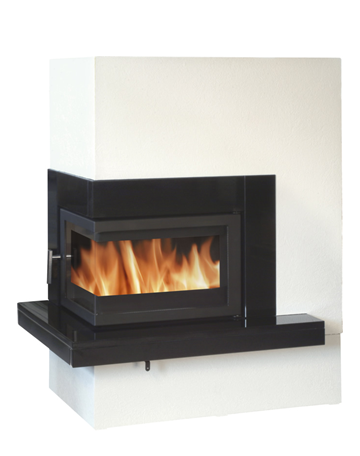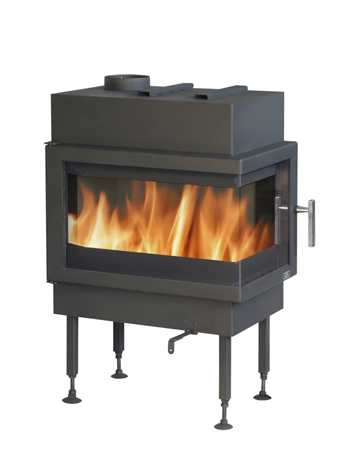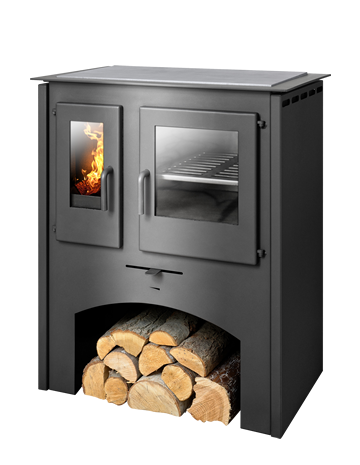© ABX, spol. s r.o. - All rights reserved

The automatic contamination control of the flue gas assures optimal ratio setting according to the flue gas temperature of primary and secondary air when burning wood or wooden briquettes. This ensures optimal combustion of wood, reduces pollution of the flue gas as well as the fuel consumption. All these aspects have a major positive impact on the environment.
The stove labelled in such a way can be optionally equipped with accumulating stones, whose major advantage is that they heat the premises for a long time after the extinction. The storage heaters have very positive impact on the environment during its operation. The stoves are usually operated in the optimum mode, generating the cleanest fuel combustion and smallest generation of dust, carbon dioxide and others.
For an efficient combustion process it is necessary to provide for a constant supply of air. If it were not so, the heating system would be very inefficient, the production of both the flue gas and the emission generation would increase and the stove glass would be stained with smoke. These undesirable characteristics may occur especially in refurbished buildings (plastic windows, insulation etc.) or directly in low energy buildings, where there is no flow of air resulting from conventional isolation losses (such as leaking windows etc.). The solution is to supply air from outside the room, e.g. from outside the building or another room. This design option for our stoves is called the central air supply (CAS).
The neck of central air feed, which is necessary for connection of the central air feed, is not included in delivery. Hrdlo vzduchu můžete objednat zde.
Figure in Millimetres
The stove efficiency represents the level of energy efficiency of the fuel consumed during heating. The higher the efficiency, the less fuel consumption resulting in the heating cost reduction.
Figure in Millimetres
The cooling loop is a safety feature for stoves equipped with exchanger, which prevents overheating of the stove when a power failure or any defect in the pump or in the hot water circuit occurs. The input of the loop is connected to the cold water supply system and the output to the drain. When an overheating occurs, the exchanger is cooled down through pushing cold water in the cooling loop. A temperature sensor opens the valve only when the maximum permissible temperature is exceeded in the heat exchanger and closes the valve after the water temperature in the heat exchanger falls below the allowed temperature limit (about 95° C).
The selected stoves equipped with hot water exchanger use a firing valve to start the process. The flap facilitates the heating up situation, when water in the heat exchanger is cold. If the valve opens, a straighter route for exhaust gases will be provided, which would otherwise stream through the cold exchanger resulting in condensation in the heat exchanger and subsequent tarring. At the same time, this shorter route also prevents the chimney from being rapidly clogged, and the faster burning in the early heating up stage results in better draft. After heating up, the stove flap closes so that all exhaust gases pass only through the exchanger so as to achieve a maximum efficiency.
Upper or rear outlet of the uptake neck to chimney.
Only upper outlet of the uptake neck to chimney.
Only rear outlet of the uptake neck to chimney.
Adjustable output determines minimum and maximum accessible output of the fireplace stoves.
The Fireplace stoves are fitted with hot-water exchanger. For parameters see Technical list.
It determines minimum and maximum size of the heated area depending on adjustable output of the fireplace stoves.
Figure in Millimetres


